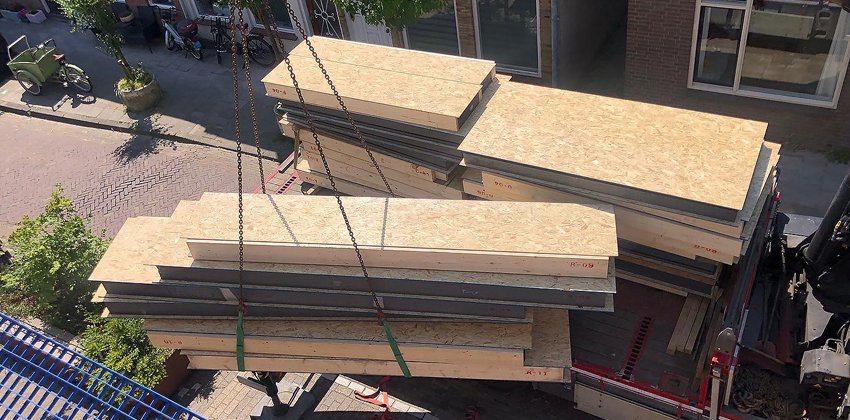
The Role of SIPs in the Future of Europe’s Construction Industry
Europe’s construction industry is at a crossroads. On one hand, the demand for affordable, high-quality housing is skyrocketing. On the other, climate commitments and stricter building codes demand greater sustainability, energy efficiency, and reduced carbon footprints. Add to this the labor shortage and rising material costs, and the question becomes clear: how can Europe build more, faster, and greener?
Structural Insulated Panels (SIPs) are emerging as one of the answers. They are more than a construction method—they represent a shift in how Europe approaches building. Prefabricated, sustainable, and efficient, SIPs are shaping the future of construction across the continent.
The Challenges Facing Europe’s Construction Industry
Before looking at SIPs’ role, it’s important to understand the challenges driving change:
- Housing Shortages: Millions of new homes are needed in the next decade. Urban areas like Amsterdam, Paris, and Madrid face critical shortages.
- Sustainability Goals: The European Green Deal and national codes (e.g., BENG in the Netherlands, RE2020 in France) require nearly zero-energy buildings (nZEB).
- Labor Shortages: The skilled construction workforce is shrinking, pushing costs higher.
- Rising Energy Prices: Homes that are inefficient quickly become financial burdens for occupants.
- Circular Economy Mandates: Regulations push for reduced waste, material recycling, and lower carbon emissions throughout the lifecycle of buildings.
These challenges demand innovation—and SIPs offer practical, scalable solutions.
Why SIPs Are Central to the Future
- Speed of Construction
SIPs cut construction times by 30–50% compared to masonry or stick-built methods. This allows cities and developers to respond more quickly to housing needs and shorten project financing cycles.
- Energy Performance
With U-values as low as 0.15 W/m²K, SIPs help meet strict European energy requirements. Airtightness also supports Passive House and nZEB certification.
- Labor Efficiency
Because panels are prefabricated, smaller crews can assemble buildings quickly. This reduces dependency on scarce skilled labor.
- Reduced Waste
Factory precision minimizes off-cuts and site waste by up to 60%, directly aligning with circular economy goals.
- Scalability
SIPs are suitable for single-family homes, multi-unit housing, schools, offices, and resorts—making them relevant across all sectors.
SIPs and the Green Transition
The European Union is pushing hard for a green transition in construction. SIPs are an enabler of this shift:
- Lower Operational Emissions: High insulation and airtightness reduce energy demand throughout a building’s life.
- Embodied Carbon Savings: Faster builds mean fewer site deliveries, less machinery use, and lower emissions.
- Circular Economy: SIPs can be disassembled and recycled at end of life, supporting Europe’s zero-waste goals.
By choosing SIPs, developers can more easily comply with green certifications like BREEAM, LEED, and DGNB.
The Impact on Housing
Housing is where SIPs will have the greatest impact. In many European cities, traditional building timelines are incompatible with urgent demand. SIP-based prefab solutions allow:
- Social Housing: Faster delivery of affordable units.
- Student Housing: Compact, energy-efficient dormitories delivered within short construction windows.
- Eco-Communities: Modular SIP homes forming the basis of sustainable neighborhoods.
- Tiny Homes and Resorts: Compact, relocatable solutions for flexible living.
By making housing faster, cheaper, and greener, SIPs address Europe’s most pressing construction need.
Overcoming Industry Resistance
Despite their advantages, SIPs face some resistance from contractors used to traditional methods. Concerns often include:
- Learning Curve: Contractors worry about unfamiliar installation processes.
- Perceived Cost: Upfront panel costs can seem higher than raw masonry materials.
- Design Misconceptions: Some assume SIPs limit architectural freedom.
The reality is different: training makes SIP installation intuitive, lifecycle costs are lower, and SIPs support versatile designs. As more successful projects are delivered, resistance is fading.
The Role of Quacent
Quacent is positioning itself at the center of this transformation by offering:
- Ready-To-Assemble (RTA) SIP Kits: Packaged by construction phase, with all connectors included.
- Partnerships Across Europe: Collaborating with local contractors and developers.
- Sustainability Commitment: Providing EPDs and LCAs to support compliance.
- Technical Support: Offering design guidance, BIM models, and on-site training.
Through these efforts, Quacent ensures that SIP adoption is not just possible but practical for projects of any scale.
Looking Ahead to 2030
By 2030, the construction industry in Europe will look very different. SIPs are expected to play a central role in:
- Affordable Housing Delivery: Meeting government mandates for faster, cost-effective housing.
- Green Building Standards: Helping developers comply with increasingly strict codes.
- Industrialized Construction: Moving more of the process into factories, reducing site risks.
- Circular Economy Integration: Ensuring buildings are designed for reuse, recycling, and disassembly.
In this future, SIPs will not just be one option among many—they will be the preferred method for building sustainably at scale.
Conclusion
The challenges of Europe’s construction industry—housing demand, sustainability, labor shortages, and rising costs—cannot be solved by traditional methods alone. SIPs provide a scalable, future-ready solution that aligns with both market needs and regulatory requirements.
As Europe looks ahead, SIPs will be central to the transition toward faster, greener, and more resilient construction. For developers, contractors, and policymakers, adopting SIPs is not just an opportunity—it is a necessity for shaping the future of Europe’s built environment.





Add a comment